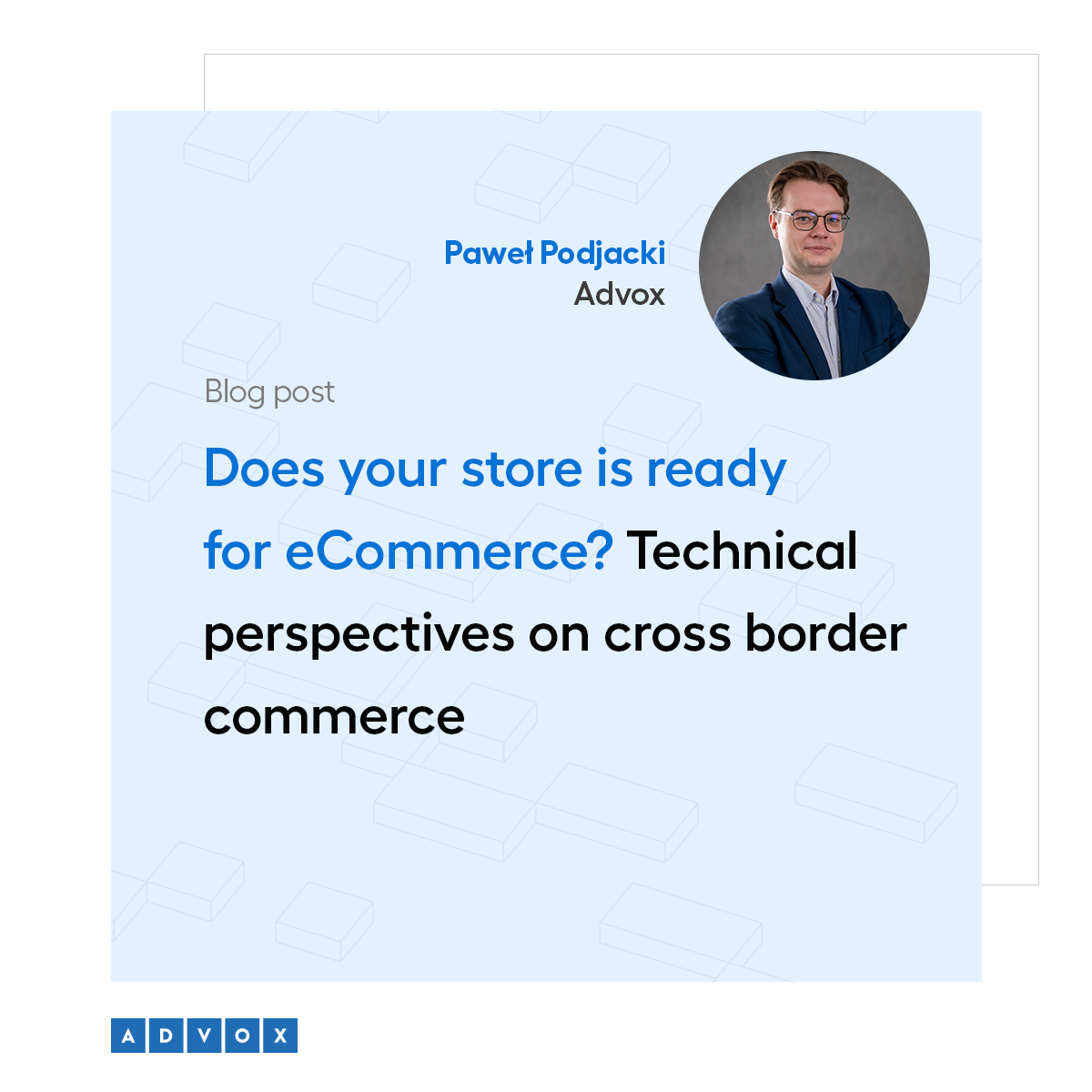Talking about cross border commerce part IV. How do foreign e-consumers pay - an interview with tPay
Different currencies, different transaction costs and, finally, different expectations and preferences of buyers regarding payment methods - managing financial issues is one of the biggest pain points for online stores debuting on foreign markets. The moment of payment is one of the critical stages during the customer's purchase path - failure to meet his needs in this aspect may involve not only cart abandonment, but also threatens loss of trust towards the seller. Looking at our domestic market, Poles are most likely to use payments via BLIK or quick transfers. They are also increasingly brave to use deferred payments (the popularity of the Buy Now, Pay Later method has increased by more than 140% compared to 2020). We asked Bartosz Witczak - Partnership Program Manager at Tpay - about how local preferences of eCommerce users are shaping up in other parts of Europe.
In the next interview in our series on cross border commerce, we take a look at the most popular payment methods in the countries that are the most common expansion destinations for Polish online stores. We outline the differences and similarities between each market and reveal what you should pay special attention to when starting to sell in another country. Choosing the right payment methods can have a big impact on the success of an expansion, so it is worth taking advantage of an expert's experience in this area - reading this interview will certainly prove helpful! Would you read?
Check out what else you should look for to succeed in cross border commerce
- Competition analysis with Dealavo
- Work organization in foreign eCommerce - an interview with Jaroslaw Uczkiewicz
- Talking about cross border commerce part III. Cross-border sales through the eyes of logistics company Arvato
Rafał Gadomski: Which countries are most often chosen by Polish online stores when expanding abroad? To what extent does matching payment methods affect the effectiveness of sales in new markets?
Bartosz Witczak: When Polish stores decide to expand abroad, they most often choose to sell in the Czech Republic, Slovakia and Romania. The above markets have a common denominator, namely online payments. Nevertheless, each region is characterized by distinct payment preferences of customers, so when planning expansion it is worth knowing how to match payment methods to a given market.

RG: Could you give an overview of how the currency markets in these countries are shaping up?
BW: In the Czech Republic (CZK currency), similar online payment methods are available as in Poland. Czechs are most likely to use online transfer (34%). They equally often choose to pay by card (29%) and occasionally - card wallets (8%) like Google Pay, Apple Pay or PayPal.
Payment preferences of Slovaks (EUR currency) are similar, with 40 percent of them reaching for a payment card. Online transfers rank second in terms of popularity. They are chosen by 15 percent of the country's residents.
Unlike the previous markets, when entering the Romanian market (RON currency), it is definitely worth betting on card payments and card wallet service, as these are the payment methods that consumers there reach for.
RG: And how does the U.K. market, which is still (despite Brexit) a frequent destination for overseas e-sales, stand out from a payments perspective?
BW: That's right - the market in the UK (GBP currency) is the third largest e-commerce market. According to Rapyd, 75% of respondents use debit card payments, and as many as 70% prefer PayPal services. Interestingly, a significant share of the statistics is also occupied by Apple Pay (29%). When starting to sell in the UK, it is also worth paying attention to deferred payments, which are strengthening their position, especially in the fashion industry. Also worth noting are the costs incurred for debit card transactions - in this case, they will be higher, as the UK is not included in the EEA (European Economic Area) as of January 2020.

RG: Talking about payments in Europe, it's worth mentioning our western neighbor - what are the preferences of German consumers?
BW: Germany, unlike other markets, has more diverse payment preferences. They pay special attention to local payment methods.
RG: Could you give examples of local payment methods specific to Germany?
BW: First will be "open invoices," which are already used by more than 90% of German e-stores. This method resembles a hybrid of cash on delivery and deferred payment. The customer has the option to order the goods, try them out and pay within 14/28 days or return them. Another billing method specific to Germany is Giropay. In addition to these local methods, there is no shortage of card wallets in particular PayPal, Apple Pay, Google Pay and card gateway.

RG: We have learned about the characteristics of payments in individual countries, and how is the market shaping up in this regard in the entire Europe?
BW: In summary, European markets look very similar in terms of the types and availability of online payment methods. The common element is certainly debit cards and card wallets. That's why, when planning cross-border sales, it's worth paying attention to whether your payment provider makes card billing available in the local currency and whether it's possible to accept transactions without currency conversion. In addition, it is important to pay attention to whether the planned sales will take place within the European Economic Area. If you decide to operate outside of it, you should be aware that the price for using online payments will be higher due to the higher cost incurred by the operator.
Payments under control - what will be the next step in eCommerce overseas expansion?
When planning to expand online sales in other countries, you need to take into account that customers in each country have different preferences and shopping habits, including in terms of selecting payment methods. Methods that are most favored by Poles may prove less attractive to foreign eCommerce users. The result? The risk of losing interest and often trust in your offer and a drop in orders. Knowledge of foreign financial markets will help you avoid such a scenario - this knowledge you have already gained! It's time to use it in practice!
Competitor analysis, organization of work in an online store and payment management - these are areas important from the perspective of foreign sales, which we have covered so far in a series of interviews with experts on cross border commerce. What do you think its next part will be about? Find out by taking a look at our blog in the near future!






